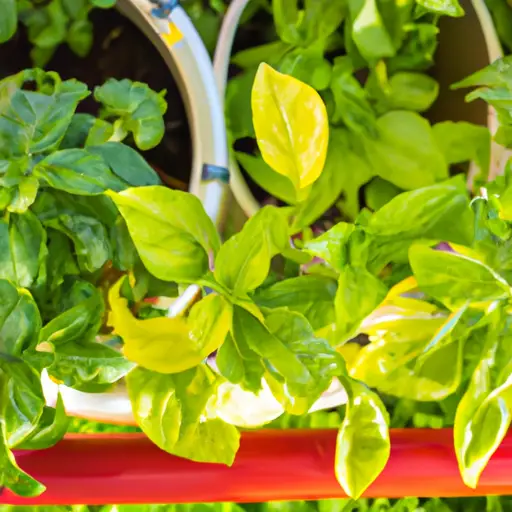Cultivating Edibles in Containers: Fresh Produce at Your Fingertips
In today’s fast-paced world, where time is a precious commodity, cultivating your own fresh produce can seem like a daunting task. However, with the rise in urban gardening and the increasing popularity of container gardening, growing your own edibles has never been easier or more accessible. By utilizing containers, you can have an abundant supply of fresh produce right at your fingertips, regardless of the size of your space.
Container gardening offers numerous advantages for those looking to grow their own edibles. Not only does it require minimal space, making it ideal for urban dwellers with little-to-no outdoor areas, but it also allows for greater control over soil quality and exposure to sunlight. Additionally, containers offer the flexibility to move plants around as needed to optimize growth conditions.
To get started with cultivating edibles in containers, the first step is to choose suitable containers. While almost any type of container can be used for growing plants, there are a few key factors to consider. Ensure that the container has adequate drainage holes to prevent waterlogging and root rot. Opt for larger containers whenever possible as they provide more space for root growth and retain moisture better than smaller ones. Additionally, consider using containers made from materials that help regulate soil temperature, such as clay or ceramic pots.
Once you have selected the appropriate containers, the next step is to choose what edibles you want to grow. Fortunately, there is a wide range of fruits, vegetables, and herbs that thrive in container gardens. Some popular options include tomatoes, lettuce, peppers, strawberries, herbs like basil and mint, and even dwarf fruit trees such as lemon or apple varieties specifically bred for container gardening.
After choosing your preferred edibles, it’s time to select a suitable growing medium or potting mix. Unlike traditional garden beds which often require amendments like compost or fertilizers to improve soil quality, container gardens benefit from using a high-quality potting mix right from the start. Look for mixes labeled specifically for container gardening, as they are typically well-draining and nutrient-rich. Avoid using garden soil alone, as it tends to compact in containers and hinder root growth.
Once you have your containers, edibles, and potting mix ready, it’s time to start planting. Begin by filling your containers with the potting mix, leaving about an inch of space at the top for watering. Follow the guidelines provided on the seed packets or plant labels for proper spacing and planting depth. After planting your chosen edibles, give them a good watering to settle the soil and ensure good contact between roots and the growing medium.
Proper care is essential for successful container gardening. Regular watering is crucial, as containers tend to dry out faster than traditional garden beds. Check moisture levels by inserting your finger into the soil up to your first knuckle; if it feels dry at that depth, it’s time to water. Aim to keep the soil consistently moist but not overly saturated. Mulching around plants can help retain moisture and regulate soil temperature.
In addition to watering, container-grown edibles also require regular fertilization due to limited nutrient availability in the confined growing space. Use a balanced organic fertilizer or slow-release granules specifically formulated for container plants. Follow package instructions for application rates and frequency.
Another vital aspect of container gardening is ensuring adequate sunlight exposure for your plants. Most edibles require at least six hours of direct sunlight per day for optimal growth and productivity. Place your containers in areas that receive ample sunlight throughout the day or consider using artificial grow lights if natural light is limited.
As your edibles grow, be sure to monitor their progress regularly. Watch out for any signs of pests or diseases and take appropriate measures to address them promptly. Prune plants as needed to maintain their shape and encourage continuous growth.
Harvesting the fruits of your labor is one of the most rewarding aspects of container gardening. As soon as your edibles reach their desired size or ripeness, gently harvest them by picking or cutting them from the plant. Enjoy the taste of freshly picked produce rich in flavor and nutrients, knowing that you cultivated it yourself.
Cultivating edibles in containers is not only a practical way to have fresh produce at your fingertips but also a rewarding and enjoyable experience. Whether you have limited outdoor space or simply want to explore a new gardening method, container gardening allows you to indulge in the joys of growing your own food while reconnecting with nature. So, get started today and embark on a journey towards fresher, healthier, and more sustainable eating habits.













